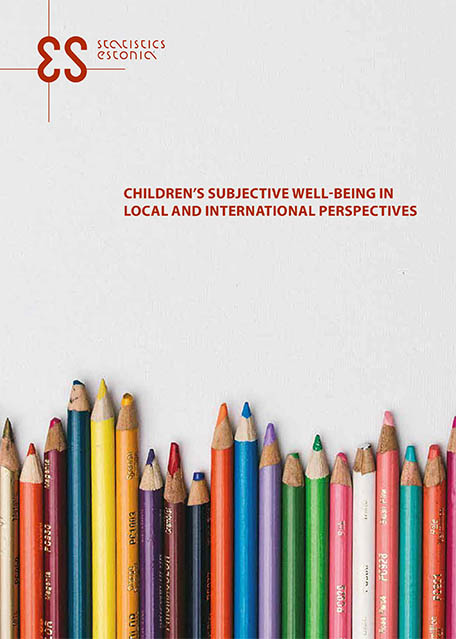Statistics Estonia released a publication on children’s well-being

On 27–29 August, the 7th international conference of the International Society for Child Indicators takes place in Tartu. The opening day included a presentation of the new publication of Statistics Estonia, published online in both Estonian and English. The publication is based on data collected from children, which significantly benefit understanding them. In addition, it includes messages to policy-makers and helps to fulfil obligations arising from the UN Convention on the Rights of the Child.
The analyses in the publication are based on small qualitative studies, official statistics, datasets of the International Survey of Children’s Well-Being (ISCWeB) as well as new data from the study of children’s rights and parenting in Estonia. In addition to Estonian authors, four key members of the International Society for Child Indicators (ISCI) were invited to contribute to the publication, which adds an international perspective. The articles focus on children’s subjective well-being, on data collected from children and their international comparison, while there are also topics on just Estonian children. The editors of the publication were Dagmar Kutsar from the University of Tartu and Kadri Raid from Statistics Estonia.

The publication reveals that within family, children’s opinions are taken into account quite a lot and they are involved in decision-making. Enabling active participation of children in school is rather less common. Children studying in schools with a smaller number of students are on average more satisfied with school and teachers. Also, children in smaller classes evaluated school more positively. In Estonia, school satisfaction is indeed higher among younger children.
Overall, the authors find that for issues related to children, it is not enough to study these from the perspective of adults – children’s own evaluations on their well-being are crucial. Children’s and adults’ evaluations complement each other and help to provide a clear picture of children’s situation for people working with them as well as policy-makers.
The first publication “Children in Estonia” on the well-being of children was published in 2000, dedicated to the 55th anniversary of the United Nations. It was the first time that both the objective and subjective well-being of children were discussed. Eight years later, in 2008, Statistics Estonia published “Lapsed. Children”. The publication gave an overview of objective well-being topics involving children and youth. In 2013, came the publication “Laste heaolu. Child Well-Being”, which drew on the principles of the UN Convention on the Rights of the Child as the normative framework for child well-being. At the time, a group of experts were working on the concept of measuring child well-being and published an approach to measuring child well-being titled “Lapse heaolu mõõtmise käsitlus”, where they offered child well-being indicators for official statistics.